| Home | About | Archives | RSS Feed |

The Independent Investor: Hi Yo Silver
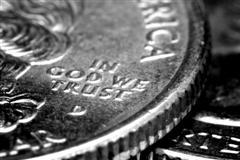 Gold is at record highs this year but silver is barely back to where it was 30 years ago. As the spin doctors out do each other in bumping up their price targets for the "other" metal, I am going to stick to my guns. Silver is just $6 an ounce short of my price target.
Gold is at record highs this year but silver is barely back to where it was 30 years ago. As the spin doctors out do each other in bumping up their price targets for the "other" metal, I am going to stick to my guns. Silver is just $6 an ounce short of my price target.
Back in 2008 when silver hit $20 an ounce and gold topped $1,000 for the first time, I recommended investors take profits. That turned out to be sage advice since both metals dropped precipitously. Silver fell to almost $9 an ounce. I promptly recommended purchasing it again. Once the price returned to $20 an ounce, I suggested that silver could reach $36-$37 before pulling back again. This week silver topped $30 an ounce before falling 5 percent.
There are several explanations for why silver has had such a great run this year. Silver's largest end-users are the electrical and electronic sectors. Both are now emerging from recession and industrial demand for the physical metal is rising. Jewelry demand for silver has also picked up. The price of gold has soared, making silver a less expensive alternative for shoppers.
The creation of silver exchange-traded funds (ETFs) has opened up a new source of demand for bullion as well. Up until 2006, investors interested in purchasing silver were required to buy and store bullion through a bullion desk, or go to a jeweler or trade in the futures market. The advent of silver ETFs greatly expanded the silver market and offers investors a low-cost, liquid way of investing. As more and more investors purchase these silver ETFs, the funds must buy up additional quantities of silver or silver stocks, sending prices up even further.
Silver does offer some protection against potential inflation as a physical and transferrable store of value. It is the same argument that is behind the price increases we have experienced for all commodities from gold to pork bellies.
Gold and silver pros often keep an eye on the price ratio between the two metals. Up until 2008, it typically required 55 ounces of silver to buy one ounce of gold. Today that ratio is roughly 47 ounces. Silver has been outperforming gold all year but historically, (over 10 years) when that ratio hits 40, silver starts to underperform gold.
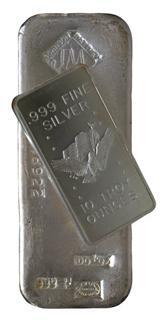 Like gold, silver can be purchased in a variety of forms. Some investors buy coins, others actually buy and store 100-ounce silver bars. These physical silver options trade at a premium to the silver price and storage costs eat into profits. One can also buy silver stocks, precious metals mutual funds and/or exchange traded funds that offer investors the option of stocks, futures or bullion without the storage fees or premiums.
Like gold, silver can be purchased in a variety of forms. Some investors buy coins, others actually buy and store 100-ounce silver bars. These physical silver options trade at a premium to the silver price and storage costs eat into profits. One can also buy silver stocks, precious metals mutual funds and/or exchange traded funds that offer investors the option of stocks, futures or bullion without the storage fees or premiums.
There is also the junk silver market: U.S. quarters, dimes and half-dollars minted before 1965. These coins have no collectable value since they are worn, scratched, chipped and otherwise damaged. This wear and tear has reduced their silver content. On average, they now contain only 71.5 ounces of silver down from the 90 percent when first minted. These old coins are sold in bags of either $100 or $1,000 face value and tend to outperform silver bullion.
Now you have a better idea of why silver is where it is. But remember, the most important lesson in investing in silver or any other commodity is to know when to sell. My price target remains $36-$37 an ounce. If I were a cautious investor, I would not wait until that price range is reached. Remember, too, that commodity prices can drop sharply and in a blink of an eye. A 10 to 20 percent drop in a week is entirely within reason, especially after a big run-up so buyers beware.
That doesn't mean that the bull market in silver is over but it could mean a sharp decline followed by a period of consolidation.
Bill Schmick is an independent investor with Berkshire Money Management. (See "About" for more information.) None of the information presented in any of these articles is intended to be and should not be construed as an endorsement of BMM or a solicitation to become a client of BMM. The reader should not assume that any strategies, or specific investments discussed are employed, bought, sold or held by BMM. Direct your inquiries to Bill at 1-888-232-6072 (toll free) or e-mail him at wschmick@fairpoint.net. Visit www.afewdollarsmore.com for more of Bill's insights.
| Tags: metals, silver, ETF |
@theMarket: Corrections Are Good for the Soul
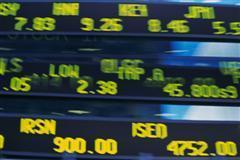 It was long overdue. For weeks, the stock market has registered overbought conditions and still it forged ahead. Investors had driven the averages back to yearly highs and only then did the rally run out of steam. Now it's time to step aside and watch.
It was long overdue. For weeks, the stock market has registered overbought conditions and still it forged ahead. Investors had driven the averages back to yearly highs and only then did the rally run out of steam. Now it's time to step aside and watch.
"Is this the start of something big or should I just stay put?" asked a retired client from Pittsfield who has recouped much of his 2008 loses over the last year.
"Stay put," I said, "because this pullback will be short and unless you are a day trader, too volatile to do more than add to existing positions."
I'm thinking we could see the stock markets drop as much as 5 percent, which from here isn't such a big deal. Take the S&P 500 Index, for example. This week it hit an intraday high of 1,227 (almost 10 points higher than its peak in April). A 5 percent decline from that level would put the average at 1,165, a mere 30 points down from here. That's not worth getting excited about.
As a rule of thumb, I believe that 5 percent to 10 percent corrections in the stock market are the "price of doing business" or the risk one must accept in equity investing. These kinds of corrections occur 2-3 times a year on average. And it is not just equities that are falling.
Commodities are also declining. As I look at the present spot price of gold, the precious metal is off over $40 an ounce while silver is down $1.50 an ounce and oil has plummeted over $3 a barrel — in just one day. Commodities tend to have extremely sharp, if short, corrections that tend to wilt most amateur investors' resolve to stay invested. It appears that once again those who have chased energy, precious metals and agricultural commodities are suffering big reversals this week. Rather than buy this weakness, they tend to sell in panic.
For those with bullish convictions, this pullback is a buying opportunity, not only in commodities but stocks in general. This coming week should provide further opportunities to establish new positions. Some of the areas I favor for additional investment are emerging markets, real estate such as REITs, commodities, commodity companies and selected technology.
As for the culprits that triggered the pullback, most of the negative events have something to do with governments. The on-again-off-again saga of the European debt crisis has reignited fresh worries over Ireland's struggle to rescue its financial system. It has led investors to re-examine Europe's financial situation in general.
At the same time, China is rumored to be hiking interest rates in an attempt to slow their economy. That would spell bad news for everyone since China has become the new locomotive of global growth. Over in Korea, where the G20 adjourned without agreeing on how to curb the growing currency war, left investors worried and disappointed over the fate of the U.S. dollar.
All of the above are serious issues but they have been with us throughout the year. China has raised rates before and emerging market growth is still quite healthy. The problems of Europe's smaller economies will continue to plague the Euro and the European Community for the next few years, but has not stopped their stock markets from enjoying substantial gains over the last six months.
The financial world is fully aware of every nuance of the currency debate. The dollar has declined since late August, sending stocks and commodities ever upward. None of this is new. Consider this pullback a healthy correction and that's all you need to know.
All these reasons for the sell-off will still be with us a month from now when the averages have regained their upward ascent, so don't put too much stock in today's headlines. They are fleeting at best. Focus instead on the opportunities this sell-off will present.
Bill Schmick is an independent investor with Berkshire Money Management. (See "About" for more information.) None of the information presented in any of these articles is intended to be and should not be construed as an endorsement of BMM or a solicitation to become a client of BMM. The reader should not assume that any strategies, or specific investments discussed are employed, bought, sold or held by BMM. Direct your inquiries to Bill at 1-888-232-6072 (toll free) or e-mail him at wschmick@fairpoint.net. Visit www.afewdollarsmore.com for more of Bill's insights.
| Tags: corrections, stocks, metals, China, commodities |
@theMarket: A September to Remember
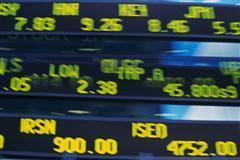 It was a strong September, the best in 70 years, with the Dow up more than 8 percent for the month while the other averages were not far behind. As the third quarter closes, however, the clear winners were precious metals. But it appears that both commodities and stocks have more to run in the weeks ahead.
It was a strong September, the best in 70 years, with the Dow up more than 8 percent for the month while the other averages were not far behind. As the third quarter closes, however, the clear winners were precious metals. But it appears that both commodities and stocks have more to run in the weeks ahead.
At the close of the week, we had a bit of profit taking in stocks as well as commodities, but that was to be expected. As long as the economic numbers continue to come in better than expected, the data will provide support for further upside in these markets.
This week most of that data surprised analysts. Second-quarter GDP growth rate came in at 1.7 percent versus an expected 1.6 percent and was 3.7 percent in the first quarter. The core PCE price index gained 1 percent versus 1.2 percent expected. Consumer spending gained 2.2 percent versus a prior gain of 1.9 percent. The New York "ISM" Index of business was 58.3% while analysts expected 55.6 percent and the initial jobless claims were down by 16,000 to 453,000, which were also better than expected.
Numbers like these cheer investors and help justify why the stock markets are climbing after four months of range-bound trading. I believe that markets can correct in two ways: a sharp, painful decline or a period of consolidation where stocks trade in a range until all the sellers have sold. Given the historical run-up in stocks from March 2009 through April 2010, I had warned investors that a correction was due and a period of marking time should also occur while the economy played catch-up with the gains in the markets. I believe that is exactly what has happened over the last five months.
The 1,150 level on the S&P 500 Index has proven stubborn resistance this week. Every time the bulls assaulted that line in the sand, the bears fought back, driving stocks lower again, but not by much and that is what gives me confidence that the bulls will break through that level at some point
Over in the commodity corner, gold has powered higher hitting its 11th record high in a month, trading at $1,316 an ounce before falling back to regroup. Silver has had an even more spectacular run and traded above $22 an ounce before also falling back. Clearly investors are "buying the dips" in those markets. I agree with that strategy. Buyers beware, however, because all that "feel good" emotion as precious metals hit new highs can quickly turn to fear and panic when (not if) commodities correct. These puppies have had quite a run, so new buyers would be advised to wait for the inevitable sharp but short pullback before buying.
As for the stock market, if we punch through 1,150, the next resistance area for the S&P 500 is around 1,180. Notice, too, that at that level we will have almost re-traced all the losses incurred since the market's April high.
One final note, I won't be writing a column next week since I'm going to Maine for a week of kayaking and hiking with my wife and our dog Titus. I'll miss you.
| Tags: metals, quarter, growth, correction |
@theMarket: The Line in the Sand
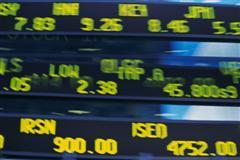 It would seem that a low-volume battle is being fought over that 1,130-1,150 level on the S&P 500. As I expected, the break above 1,130 occurred this week and now the bulls have to defend it while attempting to push up above 1,150.
It would seem that a low-volume battle is being fought over that 1,130-1,150 level on the S&P 500. As I expected, the break above 1,130 occurred this week and now the bulls have to defend it while attempting to push up above 1,150.
Actually, the S&P reached an intra-day high of 1148 this week. That is the highest level since May 18. Readers may recall that the present correction and subsequent trading range in the markets began with a decline in late April from a high of 1,219. Last week, I wrote that the S&P 500 would break above this trading range.
Also last week I raised my price targets on gold (to $1,350 per ounce) and silver ($36 per ounce) as well as other precious metals. If those metals continue to steamroll higher, I may have to bump up my estimates in the weeks ahead. Both metals continued to make new highs after the Federal Reserve on Tuesday said they were ready to increase their quantitative easing measures a second time if the economy continued to slow. Investors obviously are betting that QE II is in the cards because both commodities took off just minutes after the meeting.
"Explain that to me," asked one client over sushi at Shiro's this week.
Quantitative easing, for those who are unfamiliar with the concept, occurs when the Fed buys securities (in this case, Treasury bonds and mortgage-backed securities) in an effort to inject more money (stimulus) into the economy. Of course, more money in the system can mean higher inflation down the road if that money is used to buy goods and services. So far, that has not been the case.
All that money continues to sit on the sidelines, earning next to nothing because the banks and corporations are afraid to spend it. Since market participants discount today's actions into the future, investors are assuming that QEII will happen and, at some point down the road, that money will be spent. That will almost assuredly trigger a higher Inflation rate, so buy gold and silver now in anticipation. Of course, the best laid plans sometime go awry. Since gold and silver, along with other commodities, are generating big returns, most players are buying first and asking whether it's a good move later.
While commodities take center stage, the bulls and the bears stand toe to toe. Between them, is drawn a line in the sand that could determine whether this market rolls over once again and trades down 10 percent, or continues higher, maybe back to the April highs. I'm betting higher for now. What the bears don't understand is that the game has changed. The Fed has basically given investors a "put" on the market. Either the economy continues to grow or the Fed will come in and backstop the economy with QE II.
| Tags: securities, metals, commodities |
|

